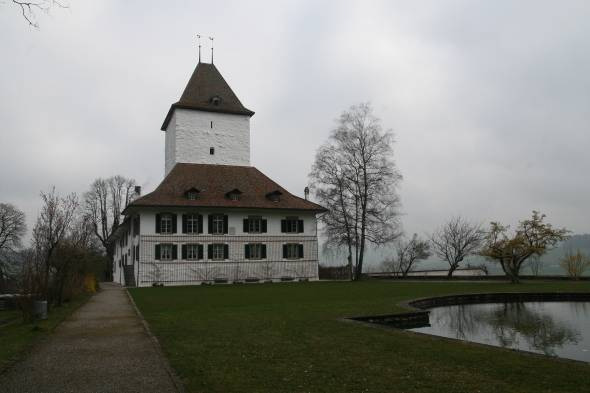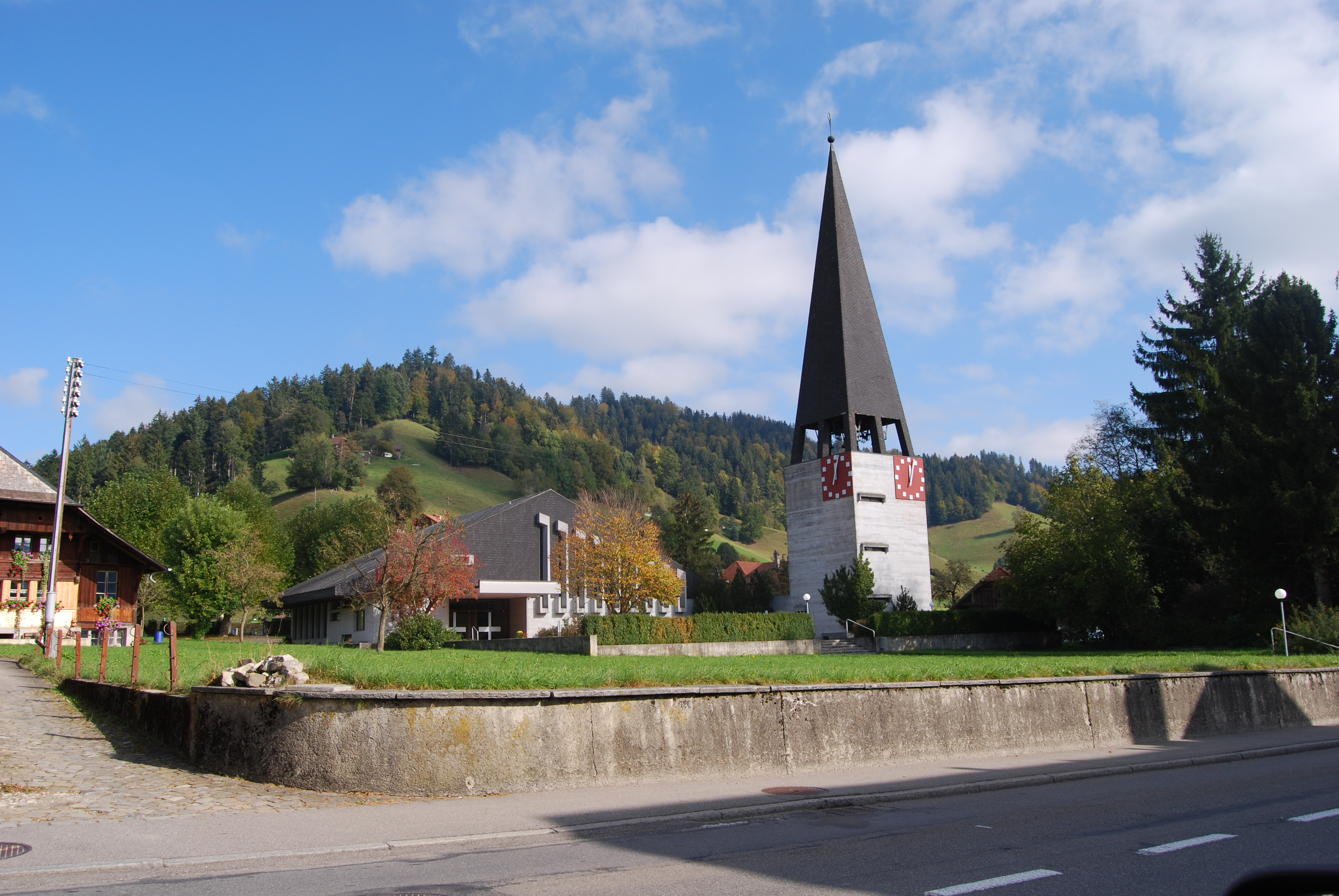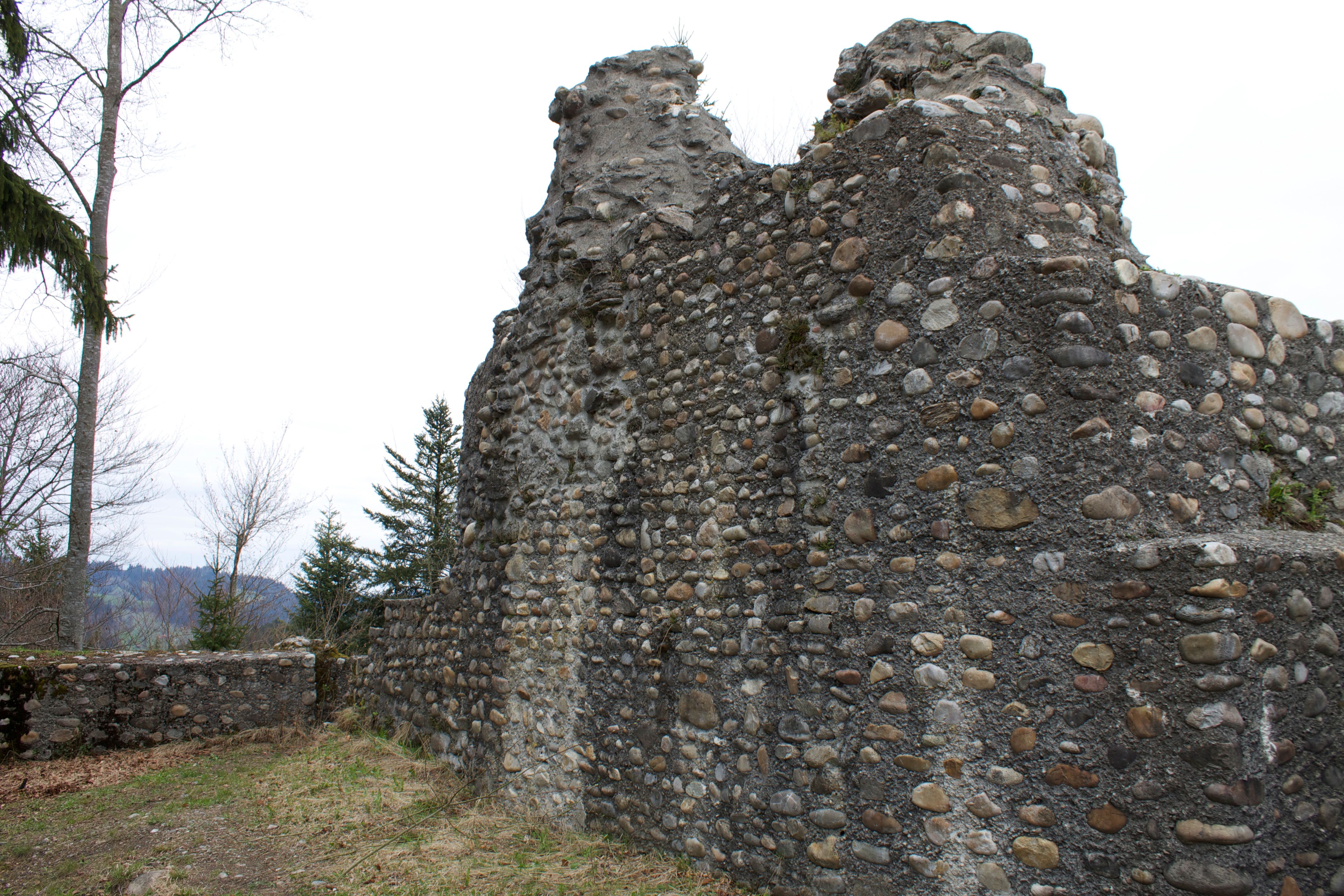|
Oberhünigen
Oberhünigen is a municipality in the Bern-Mittelland administrative district in the canton of Bern in Switzerland. History Oberhünigen is first mentioned in 1148 as ''Huningen superior''. Until 1980 it was an exclave of the municipality of Schlosswil. Throughout its history, Oberhünigen was a small farming village on the edge of the forest. It was part of the court of Wil until 1834 when it became an exclave of Schlosswil. Even after it left the political municipality of Schlosswil, it remained part of the parish. Geography Oberhünigen has an area of . As of 2012, a total of or 38.7% is used for agricultural purposes, while or 57.0% is forested. Of the rest of the land, or 3.5% is settled (buildings or roads), or 0.7% is either rivers or lakes.Swiss Feder ... [...More Info...] [...Related Items...] OR: [Wikipedia] [Google] [Baidu] |
Bern-Mittelland (administrative District)
Bern-Mittelland District in the Canton of Bern was created on 1 January 2010. It is part of the Bern-Mittelland administrative region, and is the only district in the region. It contains 75 municipalities with an area of and a population () of . It is made up of the valley of the rivers Aare and Emme, some of the foothills of the Bernese Alps, as well as the plain around the capital Bern, and has many small farms and hilly forested regions with small to mid-sized towns scattered throughout. It is perhaps best known by foreigners and visitors for the Emmental. The classic Swiss cheese with holes Emmentaler comes from this region's forests and pastures, of hilly and low mountainous countryside in the range. Municipalities Mergers and name changes *On 1 January 2011 the former municipalities of Albligen and Wahlern merged to form the new municipality of Schwarzenburg. [...More Info...] [...Related Items...] OR: [Wikipedia] [Google] [Baidu] |
Schlosswil
Schlosswil is a former municipality in the Bern-Mittelland administrative district in the canton of Bern in Switzerland. On 1 January 2018 the former municipality of Schlosswil merged into the municipality of Grosshöchstetten. History Schlosswil is first mentioned in 1146 as ''Wilare''. Until 1902 it was known as ''Wyl''. The earliest trace of a settlement in the area include scattered Bronze Age artifacts as well as carved granite block of indeterminate age. A few Roman era artifacts have also been found near the ''Schlossallee'' street. During the Middle Ages, a fortress (german: Burg Wil) was built near the village and it became the seat of the '' Herrschaft'' of Schlosswil. The lords of the fort, the Freiherren von Wiler, were first mentioned in 1146. The von Wiler family died out around 1300, and the village and associated territory passed through several noble families including, the Freiherren von Signau and eventually the Senn von Münsingen family. The territory was sp ... [...More Info...] [...Related Items...] OR: [Wikipedia] [Google] [Baidu] |
Linden, Switzerland
Linden is a municipality in the Bern-Mittelland administrative district in the canton of Bern in Switzerland. History The municipality was formed in 1945 when the former municipalities of Ausserbirrmoos, Innerbirrmoos, and Otterbach merged. Ausserbirrmoos Ausserbirrmoos was the largest in land area of the three communities that formed Linden. It was first mentioned in 1298 as ''Birmos''. Throughout the Middle Ages it was part of the ''Herrschaft'' of Diessbach. Originally it formed a single community with Innerbirrmoos, but in 1633 the two communities separated to form independent municipalities. It absorbed the land and population of the communities of Schöntal (BE) and Barschwand when they dissolved in 1887. In 1941, before the merger, it had a population of 466. Innerbirrmoos It was mentioned, along with Ausserbirrmoos, in 1298. Around 1399 it became part of the Bernese district of Röthenbach. Then, in 1529 it became part of the Landvogtei of Signau. It sepa ... [...More Info...] [...Related Items...] OR: [Wikipedia] [Google] [Baidu] |
Mirchel
Mirchel is a municipality in the Bern-Mittelland administrative district in the canton of Bern in Switzerland. History Mirchel is first mentioned in 1320 as ''Mirchlon''. The oldest traces of a settlement in the area are a La Tene grave and iron tools. During the Middle Ages Mirchel was part of the ''Herrschaft'' of Signau. In 1529 the ''Herrschaft'' came under Bernese control and Mirchel became part of the Bernese bailiwick of Signau. It has always been part of the parish of Möschberg. Beginning in the 1970s many commuters settled in the municipality and today about two-thirds of the working population commutes to jobs nearby cities and towns. Geography Mirchel has an area of . Of this area, or 76.6% is used for agricultural purposes, while or 10.6% is forested. Of the rest of the land, or 13.2% is settled (buildings or roads). [...More Info...] [...Related Items...] OR: [Wikipedia] [Google] [Baidu] |
Niederhünigen
Niederhünigen is a municipality in the Bern-Mittelland administrative district in the canton of Bern in Switzerland. History Niederhünigen is first mentioned in 1148 as ''Huningen inferior''. During the Middle Ages, Niederhünigen village was part of the ''Herrschaft'' of Hünigen. It was originally ruled by the Ministerialis (unfree knights in the service of a feudal overlord) family of Senn von Münsingen. By 1380 or 1393 the village was owned by the Bokess family from Thun. After they sold it in 1421, it passed through a number of owners. In the 16th century the medieval Hünigen water castle outside the village was destroyed in a fire. In 1554, Niklaus von Scharnachtal had a new Hünigen Castle built near the mill at Stalden. In 1588, the Bernese patrician von May family acquired the village and castle, which they occupied until 1922. The von May family also ruled the village until the 1798 French invasion and the creation of the Helvetic Republic. In 1933, the v ... [...More Info...] [...Related Items...] OR: [Wikipedia] [Google] [Baidu] |
Zäziwil
Zäziwil is a municipality in the Bern-Mittelland administrative district in the canton of Bern in Switzerland. History Zäziwil is first mentioned in 1299 as ''Cezzenwile''. There are several ruined medieval fortifications scattered around the municipality. These include the ruins in the hills above the village, the earthen fortifications at Schwanden and Zwingherrenhubel and the castle site at Spitzer Chnubel. Very little is known about any of these sites. The village appears in the historical record as a part of the ''Herrschaft'' of Signau. The entire Herrschaft was acquired by the city of Bern in 1529 and became part of the bailiwick of Signau. The villages that make up Zäziwil were part of the large parish of Grosshöchstetten. During the 19th century the villages' population grew and the parish was no longer able to meet the needs of the parishioners. In 1819 a Curate was assigned to the village, followed in 1874 by a Vicar. In 1961 the village became part of a ... [...More Info...] [...Related Items...] OR: [Wikipedia] [Google] [Baidu] |
Bowil
Bowil is a municipality in the Bern-Mittelland administrative district in the canton of Bern in Switzerland. History Bowil is first mentioned in 1299 as ''Bonwile''. The village was once part of the ''Herrschaft'' of Signau and the Freiherren of Signau built their castles, Alt-Signau and Neu-Signau, between Bowil and Signau villages. Today, the municipal border has been redrawn and the ruins of both castles are in Bowil. During the Middle Ages, Bowil was part of the lands of the Freiherr of Signau, but other distant landowners and local farmers owned rights or property in the village. In 1528, Bern adopted the Protestant Reformation and Bowil quickly followed. However, in the following years, it became a haven for Anabaptists. In 1720, to try to convert the Anabaptists to the Swiss Reformed faith, Bern established a filial church in the village. In 1930 that church became a parish church over the parish of Bowil-Oberthal. Traditionally the village economy relied on sub ... [...More Info...] [...Related Items...] OR: [Wikipedia] [Google] [Baidu] |
Conservative Democratic Party Of Switzerland
The Conservative Democratic Party of Switzerland (german: Bürgerlich-Demokratische Partei Schweiz, BDP; french: Parti bourgeois démocratique suisse, PBD; it, Partito Borghese Democratico Svizzero, PBD; rm, , PBD; ''Swiss Democratic Bourgeois Party'') was a conservative political party in Switzerland from 2008 to 2020. After the 2019 federal election, the BDP had three members in the National Council. It was founded as a moderate splinter group from the national-conservative Swiss People's Party (SVP/UDC); it was created as a political party on the federal level on 1 November 2008. It was led by Martin Landolt. It had, until January 2016, one Federal Councillor, Eveline Widmer-Schlumpf, whose election in defiance of the SVP/UDC incumbent Christoph Blocher led to the creation of the party. It comprised most of the SVP/UDC's old centrist-agrarian wing, which had been overshadowed in recent years by its nationalist-activist wing. The party's name in German, French, Italian ... [...More Info...] [...Related Items...] OR: [Wikipedia] [Google] [Baidu] |
Federal Democratic Union Of Switzerland
The Federal Democratic Union of Switzerland (German: ''Eidgenössisch-Demokratische Union'', EDU; French: ''Union Démocratique Fédérale'', UDF; Italian: ''Unione Democratica Federale'', UDF; Romansch: ''Uniun Democrata Federala'', UDF) is a national-conservative political party in Switzerland. Its ideology is politically conservative, Protestant fundamentalist, and right-wing populist. It is similar to the Christian right in the United States, and its top goals were to promote "biblical values" and oppose other cultures and values. Founded in 1975, the party's current president is . The EDU is a minor political party that polls around 1% of the vote and holds one seat in the Swiss National Council as of 2019. History The EDU was founded in 1975 as a split of the Republican Movement and the Nationale Aktion. The EDU maintains that it split from the Evangelical People's Party. At the beginning of its existence, the EDU's platform was strongly influenced by the ideology of ... [...More Info...] [...Related Items...] OR: [Wikipedia] [Google] [Baidu] |
Social Democratic Party Of Switzerland
The Social Democratic Party of Switzerland (german: Sozialdemokratische Partei der Schweiz; SP; rm, Partida Socialdemocrata da la Svizra) or Swiss Socialist Party (french: Parti socialiste suisse, it, Partito Socialista Svizzero; PS), is a political party in Switzerland. The SP has had two representatives on the Federal Council since 1960 and received the second highest total number of votes in the 2019 Swiss federal election. The SP was founded on 21 October 1888 and is currently the second largest of the four leading coalition political parties in Switzerland. It is the only left-leaning party with representatives on the Federal Council, currently Alain Berset and Simonetta Sommaruga. As of September 2019, the SP is the second largest political party in the Federal Assembly. Unlike most other Swiss parties, the SP is the largest pro-European party in Switzerland and supports Swiss membership of the European Union. Additionally, it is strongly opposed to capitalism and m ... [...More Info...] [...Related Items...] OR: [Wikipedia] [Google] [Baidu] |
Voter Turnout
In political science, voter turnout is the participation rate (often defined as those who cast a ballot) of a given election. This can be the percentage of registered voters, eligible voters, or all voting-age people. According to Stanford University political scientists Adam Bonica and Michael McFaul, there is a consensus among political scientists that "democracies perform better when more people vote." Institutional factors drive the vast majority of differences in turnout rates.Michael McDonald and Samuel Popkin"The Myth of the Vanishing Voter"in American Political Science Review. December 2001. p. 970. For example, simpler parliamentary democracies where voters get shorter ballots, fewer elections, and a multi-party system that makes accountability easier see much higher turnout than the systems of the United States, Japan, and Switzerland. Significance Some parts of society are more likely to vote than others. As turnout approaches 90%, significant differences between vo ... [...More Info...] [...Related Items...] OR: [Wikipedia] [Google] [Baidu] |
Secondary Sector Of The Economy
In macroeconomics, the secondary sector of the economy is an economic sector in the three-sector theory that describes the role of manufacturing. It encompasses industries that produce a finished, usable product or are involved in construction. This sector generally takes the output of the primary sector (i.e. raw materials) and creates finished goods suitable for sale to domestic businesses or consumers and for export (via distribution through the tertiary sector). Many of these industries consume large quantities of energy, require factories and use machinery; they are often classified as light or heavy based on such quantities. This also produces waste materials and waste heat that may cause environmental problems or pollution (see negative externalities). Examples include textile production, car manufacturing, and handicraft. Manufacturing is an important activity in promoting economic growth and development. Nations that export manufactured products tend to gene ... [...More Info...] [...Related Items...] OR: [Wikipedia] [Google] [Baidu] |




